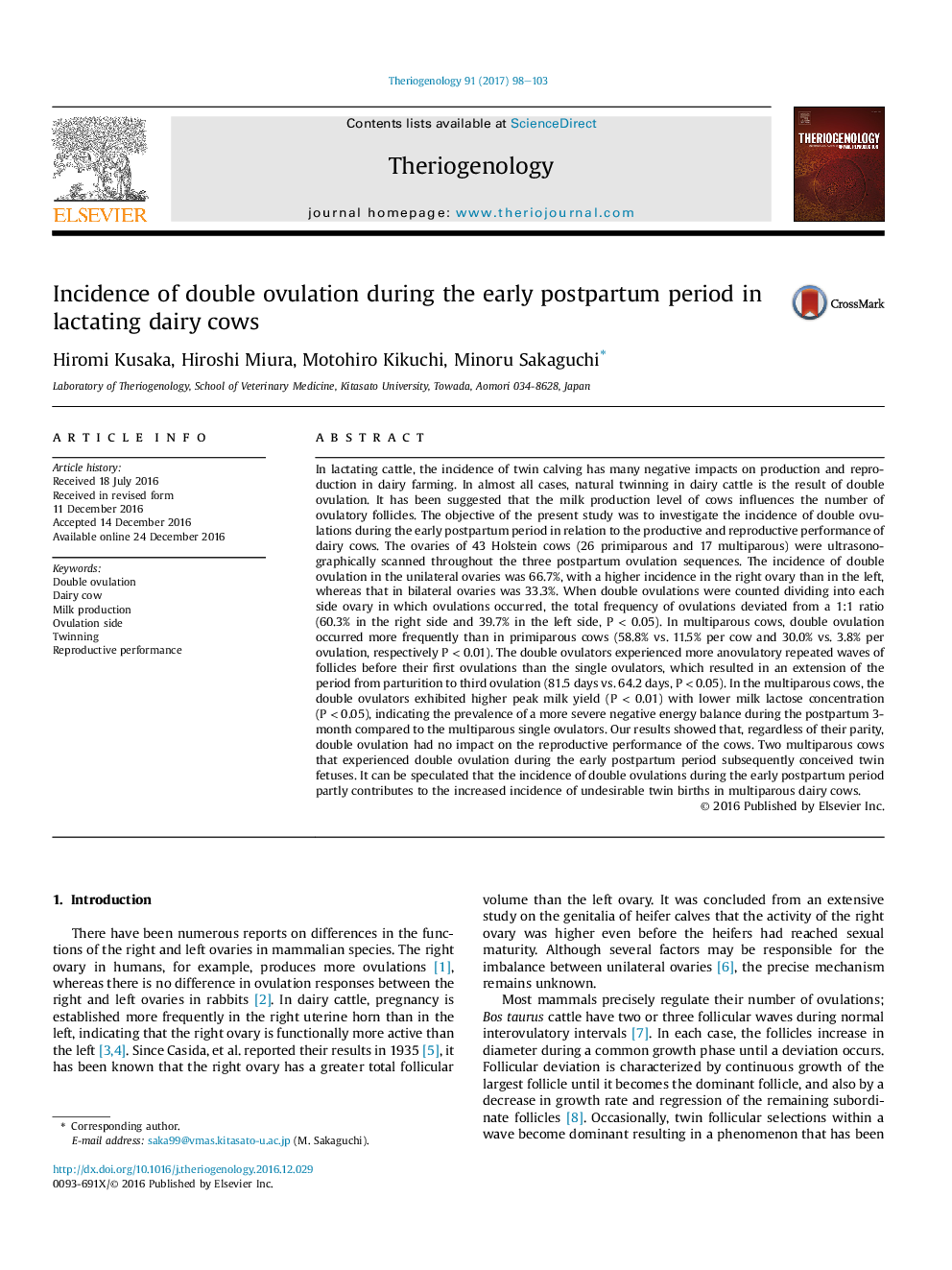| Article ID | Journal | Published Year | Pages | File Type |
|---|---|---|---|---|
| 5523484 | Theriogenology | 2017 | 6 Pages |
â¢We investigated the incidence of double ovulation in early postpartum dairy cows.â¢Both characteristic ovulation side and factors influencing the incidence of double ovulation was shown.â¢Milk production level may be associated with the incidence of double ovulation, which influences no reproductive traits.
In lactating cattle, the incidence of twin calving has many negative impacts on production and reproduction in dairy farming. In almost all cases, natural twinning in dairy cattle is the result of double ovulation. It has been suggested that the milk production level of cows influences the number of ovulatory follicles. The objective of the present study was to investigate the incidence of double ovulations during the early postpartum period in relation to the productive and reproductive performance of dairy cows. The ovaries of 43 Holstein cows (26 primiparous and 17 multiparous) were ultrasonographically scanned throughout the three postpartum ovulation sequences. The incidence of double ovulation in the unilateral ovaries was 66.7%, with a higher incidence in the right ovary than in the left, whereas that in bilateral ovaries was 33.3%. When double ovulations were counted dividing into each side ovary in which ovulations occurred, the total frequency of ovulations deviated from a 1:1 ratio (60.3% in the right side and 39.7% in the left side, PÂ <Â 0.05). In multiparous cows, double ovulation occurred more frequently than in primiparous cows (58.8% vs. 11.5% per cow and 30.0% vs. 3.8% per ovulation, respectively PÂ <Â 0.01). The double ovulators experienced more anovulatory repeated waves of follicles before their first ovulations than the single ovulators, which resulted in an extension of the period from parturition to third ovulation (81.5 days vs. 64.2 days, PÂ <Â 0.05). In the multiparous cows, the double ovulators exhibited higher peak milk yield (PÂ <Â 0.01) with lower milk lactose concentration (PÂ <Â 0.05), indicating the prevalence of a more severe negative energy balance during the postpartum 3-month compared to the multiparous single ovulators. Our results showed that, regardless of their parity, double ovulation had no impact on the reproductive performance of the cows. Two multiparous cows that experienced double ovulation during the early postpartum period subsequently conceived twin fetuses. It can be speculated that the incidence of double ovulations during the early postpartum period partly contributes to the increased incidence of undesirable twin births in multiparous dairy cows.
